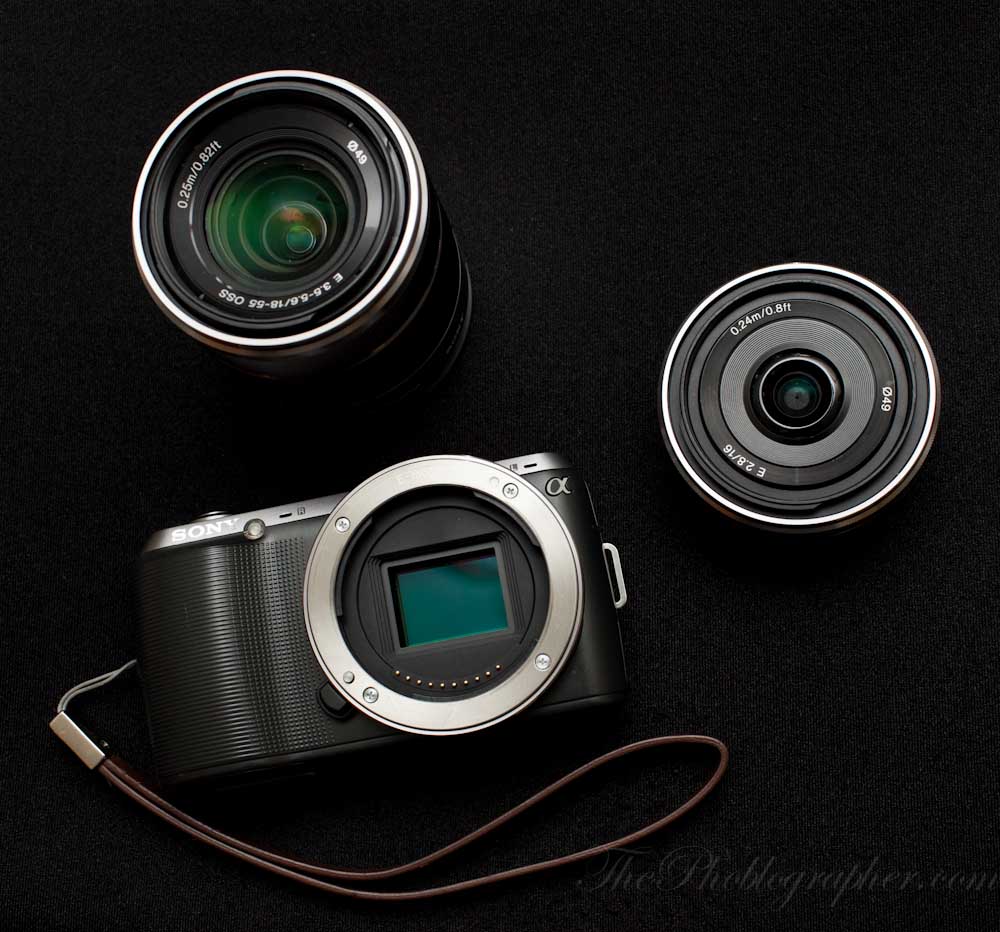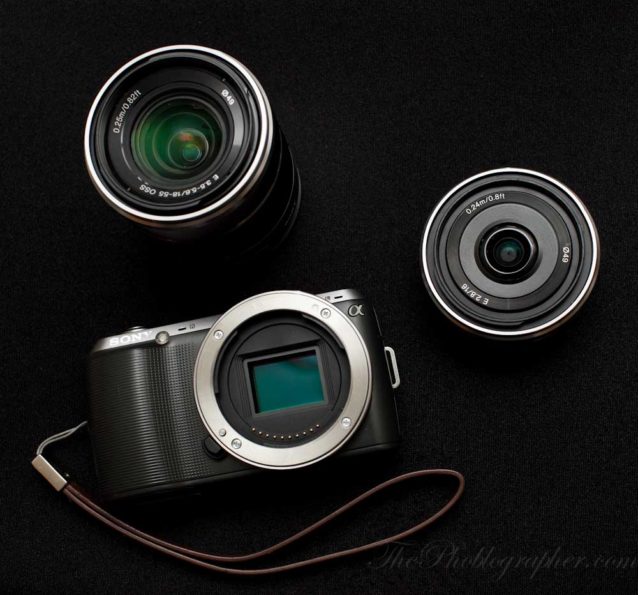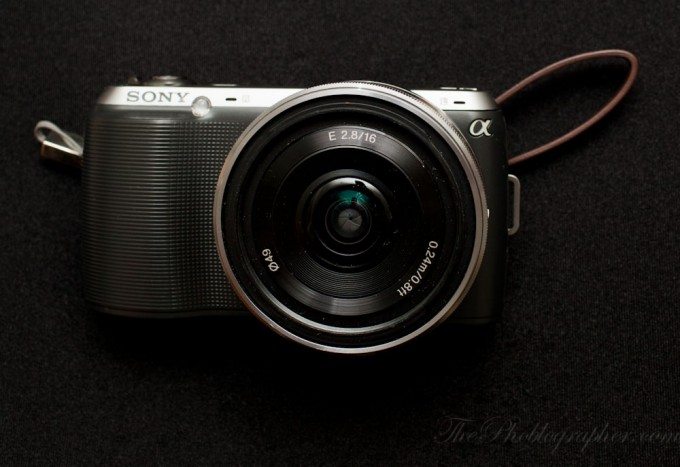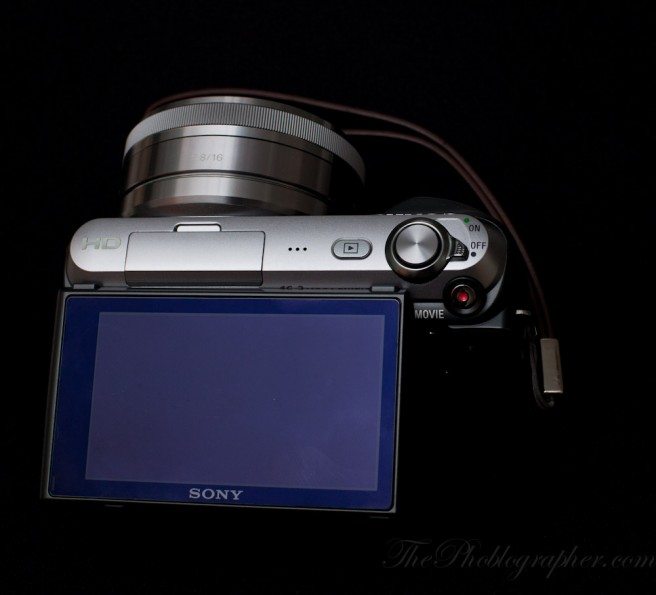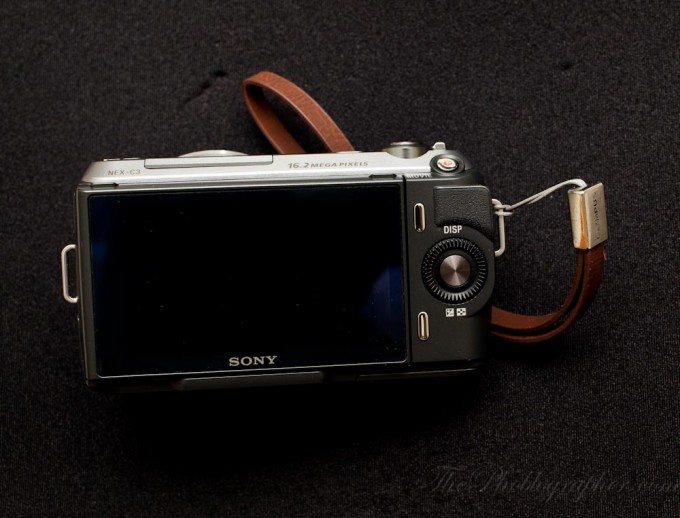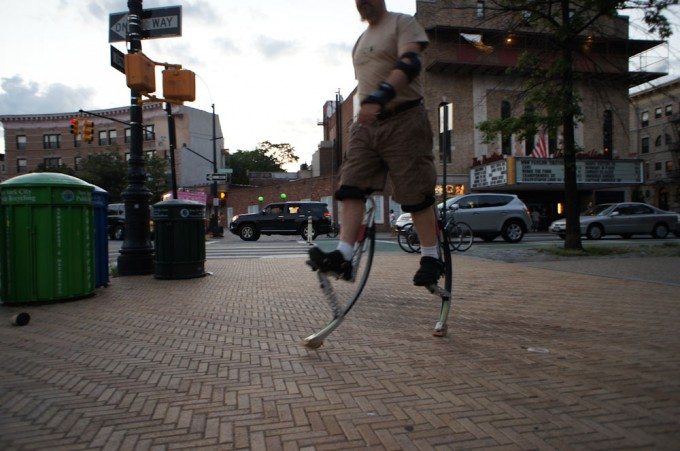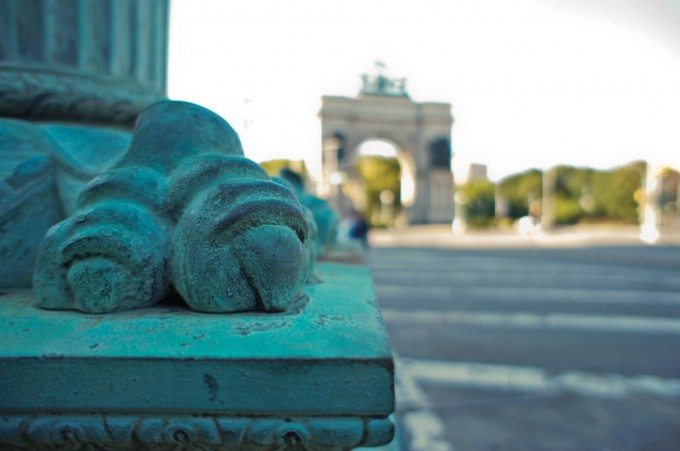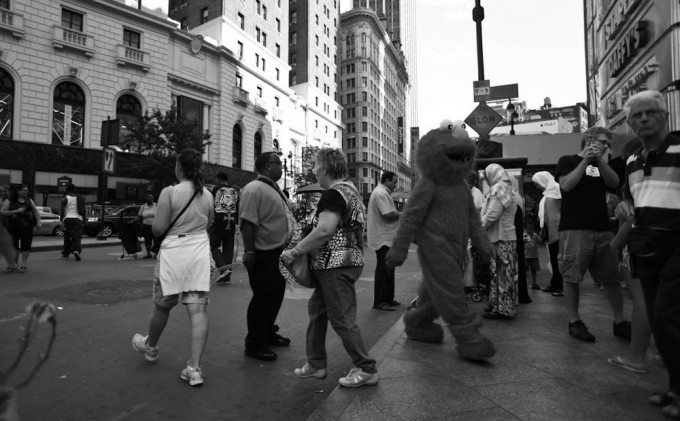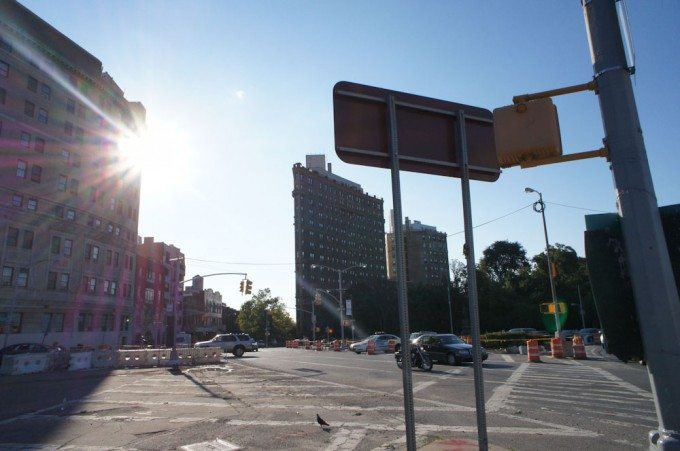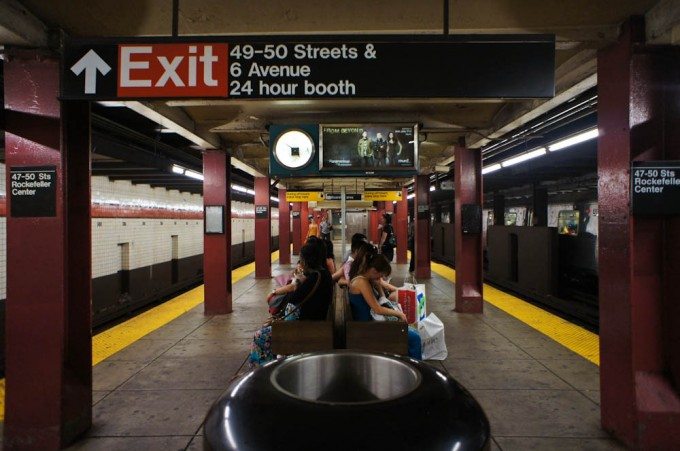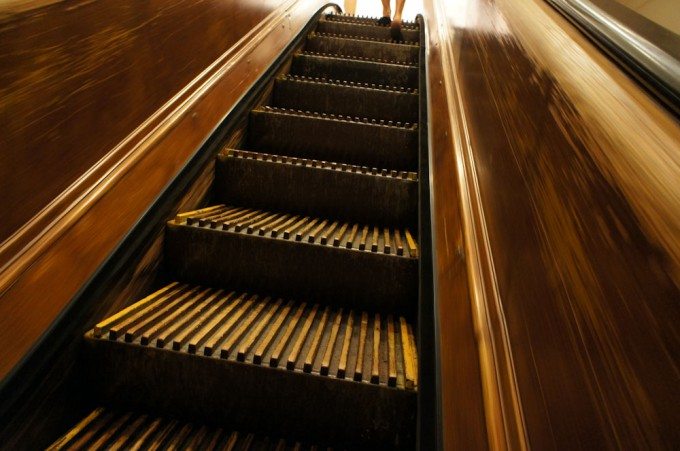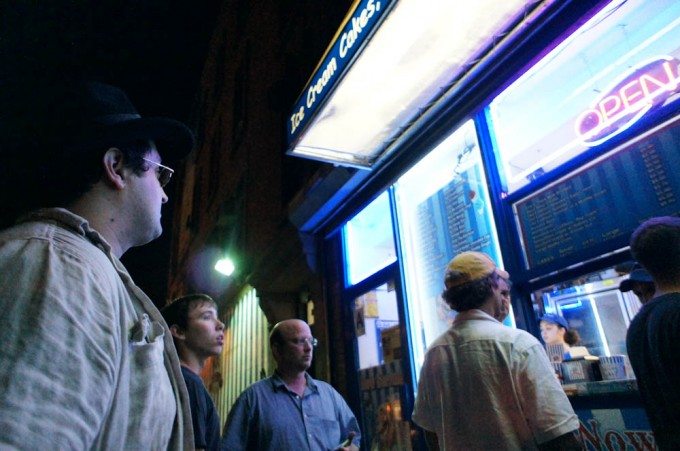Last Updated on 08/09/2011 by Chris Gampat
The Sony NEX C3(or NEX-C3 or C-3 as all the cool kids on the forums are calling it), is the latest in the line of mirrorless cameras from Sony. Promising better ergonomics, more control over your image, and better image quality than the predecessors, the NEX C3 has quite a bit to live up to. As a system that has previously promised amateurs better image quality by essentially designing the camera around just leaving it in auto, the NEX system has taken off to the point of helping Sony capture the #2 camera spot in Europe. But can the new NEX C3 target the same amateurs while still making that extra bit of control a bit easier for the pros?

Tech Specs
These specs were borrowed from B&H Photo’s listing of the Sony Alpha NEX-C3 Digital Camera with 16mm f2.8:
| Camera Type | Sony E-mount interchangeable lens digital camera |
| Resolution | 16.2Mp |
| Sensor | Exmor HD APS sensor – 23.5 x 15.6mm Processor: BIONZ image processor Anti-dust: Charge protection coating on low-pass filter and electromagnetic vibration mechanism Pixel gross: Approx. 16.5Mp Effective picture resolution: Approx. 16.2Mp Focal length conversion factor: 1.5x Color filter system: RGB primary color filters |
| Bit Depth | Not specified by manufacturer |
| File Formats | Still: JPEG (Standard, Fine), RAW, RAW + JPEG Video: MP4 (MPEG-4 AVC(H.264)) Audio: MPEG-4, AAC-LC |
| File Size | Still: Still image size 16:9: L: 4912 x 2760 (14Mp), M: 3568 x 2000 (7.1Mp), S: 2448 x 1376 (3.4Mp) Still image size 3:2: L: 4912 x 3264 (16Mp), M: 3568 x 2368 (8.4Mp), S: 2448 x 1624 (4Mp) Video: MP4 HD: 1280 x 720/30p, MP4 VGA: 640 x 480/30p |
| Color Spaces | sRGB, Adobe RGB |
| Picture Effects | Picture Effect(s): 7 types (11 variations): Posterization (Color), Posterization (B/W), Pop Color, Retro Photo, Partial Color (R), Partial Color (G), Partial Color (B), Partial Color (Y), High-key, High Contrast Monochrome, Toy Camera |
| Lens | E-mount 16mm F2.8 |
| Lens Mount | Sony E-mount |
| Aperture | f/2.8-22 |
| Focal Length | 24mm 35mm equivalent |
| Filter | 49mm |
| Elements/Groups | 5 groups, 5 elements (1 aspheric surface) |
| Minimum Focus Distance | 9.4″ / 0.24m |
| Number of Aperture Blades | 7 blades (circular aperture) |
| Drive | Burst Buffer: JPEG Standard (18 shots), JPEG Fine (14 shots), RAW (6 shots)RAW+JPEG (6 shots) Continuous Shooting Speed: Continuous (2.5fps), Speed Priority (5.5fps) Drive Mode: Single-shot, Continuous, Speed Priority, Self-timer, Continuous Self-timer, Bracketing Flash Sync Speed : 1/160 seconds Self-timer : 2-sec. or 10-sec. delay, (single continuous 3 or 5 frames) Shutter Speeds : 1/4000 to 30 seconds, bulb Shutter Type : Electronically-controlled, vertical-traverse, focal-plane shutter |
| Viewfinder | Magnification: 0.073x (optional, APS-C when attached) |
| Exposure System | Auto Exposure Lock: Yes (AE Lock with focus lock) Color Temperature: 2500 – 9900 k with 19-step Magenta / Green compensation Creative Style: Standard, Vivid, Portrait, Landscape, Sunset, B/W D-Range Optimizer: Yes: (Auto, Level 1-5, off) Exposure Compensation: +/-2.0 EV (in 0.3 EV steps) Exposure Settings: iAUTO, Program Auto (P), Aperture priority (A), Shutter priority (S), Manual (M), Sweep Panorama (2D), Sweep Panorama (3D), Anti Motion Blur, Picture Effect, Scene Selection ISO: Auto, 200 to 12800 Metering: 49 Segment metering from CMOS image sensor Metering Modes: Multi-segment, Center-weighted, Spot Metering Sensitivity: 0 EV – 20 EV, (at ISO 100 equivalent w/ f/2.8 lens) Noise Reduction: Long exp. NR: (On/Off, available at shutter speeds longer than 1 second), High ISO NR: (Auto/Weak) Scene Mode(s): Portrait, Landscape, Macro, Sports action, Sunset, Night portrait, Night View, Handheld Twilight White Balance Mode: Auto,Daylight, Shade, Cloudy, Incandescent, Fluorescent, Flash, Setting the color temperature, Color Filter, Custom |
| Focus Control | Focus system: Contrast AF Focus points: 25 points AF modes: Single-shot AF, Continuous AF, Direct Manual Focus, Manual Focus Focus area: Multi Point AF (25 points), Center Weighted AF, Flexible Spot AF Focus Sensitivity: 0 EV to +20 EV (at ISO 100 conversion with f/2.8 lens) Manual focus assist: Magnified display for precise manual focus Focus features: Predictive Focus Control, Focus Lock AF Illuminator: Built-in, LED type |
| Flash | Flash bracketing: 3 frames, 1/3, 2/3EV steps selectable Flash compensation: +/-2EV in 0.3EV steps Flash coverage: FOV coverage up to 16mm (in the focal length) Flash metering system: Pre-flash TTL Flash modes: Autoflash, Fill-flash, Rear sync, Slow sync, Red-eye reduction Flash type: Smart accessory terminal (HVL-F7S Flash supplied) Guide number: 7 (in meters at ISO 100) Recycling time: Approx. 4 seconds |
| Built-in Memory | N/A |
| Memory Card Type | Dual card slot Memory Stick PRO Duo / Pro-HG Duo media SD/SDHC/SDXC memory card |
| Connectivity | BRAVIA Sync (via HDMI with compatible BRAVIA HDTV) DVDirect via USB HDMI Type C mini PhotoTV HD with BRAVIA Sync enabled HDTV and HDMI cable USB 2.0 hi-speed (mass-storage, PTP) |
| LCD Display | LCD Type : 3.0″ / 7.6cm TFT Xtra Fine LCD (921,600 pixels) w/TruBlack technology Angle Adjustment: Up – 80 degrees, Down – 45 degrees Brightness Control: Auto (-2 to +2 step sunny weather) Coverage: 100% Live View: Yes (Constant AF Live View) Real-time image adjustment display: Exposure Compensation, WB, Creative Style Histogram: Yes (On/off) Grid Display: Yes (On/off) Peaking: Yes (MF only, Level setting: High/Mid/Low/Off), (Color: White/Red/Yellow) Customization: Brightness: Auto, Manual, Sunny Weather Display, Color: Black, White, Blue, Pink |
| Miscellaneous | Advanced User Interface: Easy-to-understand graphic display and on-screen help guide user-friendly function menu Anti Motion Blur: 6-image layering Auto High Dynamic Range: Yes, (Auto Exposure Difference, Exposure difference Level (1-6 EV at 1.0 EV step, Off) Sweep Panorama: Horizontal, vertical, and 3D Panorama Photo Creativity: Yes (via iAuto Mode) Shooting Tips: 80 expert advice shooting tips |
| System & Software Requirements | Supplied software: PMB (Picture Motion Browser) 5.2 Image Data Converter, SR 3.2 Image Data, Lightbox SR v2.2 Operating System Compatibility : Windows XP SP3 (32 bit), Windows Vista SP2, Windows 7; Mac OS X (v10.3-10.6) (PMB is not compatible with Mac OS) |
| Power Requirement | Battery: InfoLITHIUM NP-FW50 (7.2V) Number of still images : Approx. 400 images (CIPA standard) |
| Dimensions | 4.3 x 2.4 x 1.3″ / 109.6 x 60.0 x 33.0mm |
| Weight | 7.9 oz / 225g – excluding battery and memory card 10.0 oz / 283g – with battery and memory card |
Ergonomics
The Sony NEX C3 looks extremely elegant and fits in the hand just so as well: which is remarkable since it houses an APS-C sized sensor! At the front of the camera is the mount where one attaches the lens, the grip, and the AF illumination assist lamp. The grip is textured for better gripping. While it protrudes out to a good extent, I wish that the body were actually longer like the Olympus Micro Four Thirds line for better ergonomical control. Still though, this isn’t bad at all.
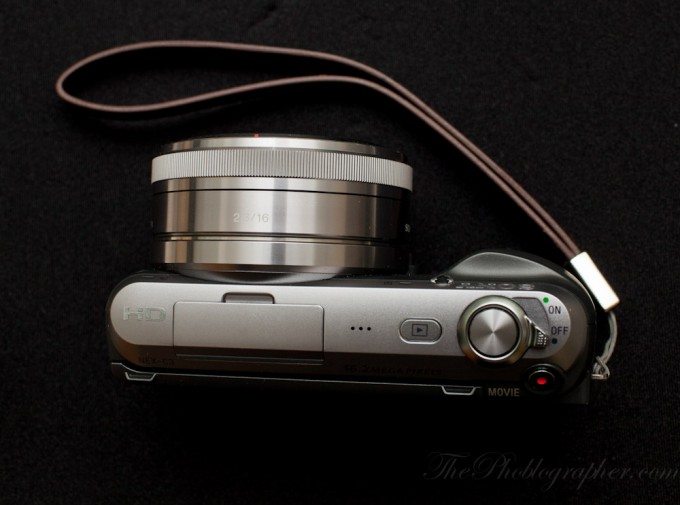
The top of the camera is characterized primarily by the shutter release button which has an on/off switch around it. In use, that will remind users of their zoom switches on their old point and shoots. Next to that is the playback button and the special Sony shoe that will only take Sony specific flashes and other accessories. It is here that you get to see how far the grip protrudes out.
Even nicer is the fact that the LCD flips up for shooting from the hip. Professional and experienced photographers will love this feature. I sure did.
The back of the camera houses the very good LCD screen: though do note that it can be a pain to flip up at times. Also, there is a little thumb grip area in the top right. Plus there is the setting dial that already programs two functions to the top and bottom and allows the user to program the left and right. I set mine to ISO and White Balance. By pressing in the middle button, one chooses the shooting mode.
The two buttons above and below those are for different settings depending on which interface of the camera you are in.
The NEX C3 body is so small that the lenses make it look even smaller. Indeed, both the 18-55mm and 16mm f2.8 are fairly large.
When you put the lens hood on the 16mm f2.8, it looks a bit larger, but still isn’t intimidating at all.
Autofocus
The NEX C3 has three different types of focusing: Autofocus, Manual focus and DMA. The latter allows the user to focus first and then manually touch it up.
Manual focusing works very well: almost exactly like the way that it does with Micro Four Thirds camera models.
Autofocusing is quick and silent: which is perfect for almost anyone’s needs. It is also usually very spot on most of the time. Beyond this, you can fine tune it to track a moving subject, focus consistently on a certain area, or focus on different sections of the frame.
Do note though that it is quick for static object, not those in motion. However, for the image above, I really wish it were. Either way, it was a totally bad ass moment to capture.
For those of you that love Street Photography or like taking candids photos, the autofocus is more than fast enough to be able to handle your needs. The photo above was shot as myself and the people in the photo were walking into the street. I quickly pointed the camera, focused, shot, waved thank you to them, and moved along.
Sound like something you would do?
Well if you’re not the type of person to photograph people, how about flowers? The images from this sensor are really, really nice. However, the focusing is a bit of a pain in that it sometimes isn’t so smart. I tried focusing on the front-most purple flower and it took a couple of attempts to do so. It would focus on something else instead.
Want to manually focus? The NEX C3 features focus peaking: which means that you’ll see vertical lines on the screen to show you where exactly you’re focusing on. So if you use lots of old lenses and want to adapt them, you’re in luck.
In Use
There are a heck of a lot of advantages when it comes to shooting with the NEX C3. For starters, it’s super tiny and the LCD screen can flip up. If you want to take candid photos (such as with street photography) you can shoot from the hip with ease and not alarm your subjects. Combine this with the itsy bitsy teenie weenie size, and you’ve got a winner.
But most people are probably too timid of street photography so there are loads of other things you can shoot with it. Since I said the camera is great for candids, it should be noted that it is an exceptional party camera. Do note though that the 16mm f2.8 lens is very soft. You can take a look at our sharpness face off against the Panasonic 20mm f1.7 here. What makes it so great for parties is the LCD screen, small size, and relative ease of use in nailing the right image.
Oh yeah, plus there’s the sweep panoramic feature. Granted, it can be buggy at times, but it’s still very good.
Of all the creative/art filters that I used, the only one that I really liked was Toy Camera: which gives the image vignetting and tweaks the colors to look more saturated. Below is the image without a creative filter.
Well, it’s essentially the same image. Either way, it shows that the Hipstamatic look is strong with the NEX C3!
The Sony NEX C3 is, once again, super tiny. So it will give you a better reason to get up close and personal with people when using it.
Since the camera is so tiny, it can sometimes go totally unnoticed by most people. I’ve recently come back from shooting days with my DSLR, and thought to myself that I wish I had a smaller and quieter camera. With that in mind, note that the C3 has a loud shutter sound.
In fact, I don’t understand why the shutter sound is so loud. It is also perhaps my biggest peeve with the camera. Otherwise, I honestly wish that it had a touchscreen as Olympus did a very good job recently with the EP3.
To be more clear about the shutter noise, if there is already loud noise in your environment, people won’t pay it any attention. If you’re in a very quiet place (such as in a church) it will be heard.
Metering
My testing of the metering of cameras has to do with applying the rules of the good old Sunny 16 rule of photography. According to the camera’s meter, when the settings were at f16 and the shutter speed was the reciprocal of the ISO, the image was only underexposed by a very small amount. This leads me to believe that the Sony NEX system will tend to overexpose a bit, but for the most part it is spot on.
In my real world review, the metering often was spot on and very good indeed. Note that the metering mode was set to multi segment: which meant that it metered the entire scene rather than just a spot.
Even as I tried to edit the image above, I was still able to recover quite a bit of detail in the sky.
Image Quality
Before I go on, I should note that I am testing the JPEG quality here because at the moment, Lightroom 3 doesn’t support the RAW output. However, this camera is targeted towards the amateur crowd, and they will probably shoot in JPEG anyway. As for the pros, ever heard of Scott Kelby? The Photoshop maven only shoots in JPEG for most gigs shoots in JPEG while shooting sports.
The Sony NEX C3 renders colors very accurately: which means that in bleak surroundings, you’ll have to expect bleakness (despite those that complain about color rendering in said environments).
Even in JPEG mode, the camera’s dynamic range is still very good: which makes me drool at what the RAW files are like. Additionally, the color depth is quite admirable for this camera. In fact, I didn’t expect to be this surprised.
Professionals, semi-professionals and enthusiasts will be happy with the results from the NEX C3. If they’re okay with it, the amateurs will be more than happy.
High ISO Ability

Once again, at the time of reviewing this camera, the RAW files were not editable. With that said though, the JPEG image quality at high iso settings is still quite decent. Most people will be able to see image noise, but it sure beats a point and shoot camera of the same size.
Even though the images can be a bit noisy, they still are very usable. This has me excited to see what else Sony will have to offer in the future. With this said though, it’s worth it to note that color rendering and white balancing is still very accurate and true to life at high ISO settings.
Conclusions
So is it worth the purchase? The Sony NEX C3 is a small camera that packs big image quality, and does so in a package that tries to put an emphasis on simplicity. Indeed, for the consumer, it will be simple. For the semi-professional, it may take a bit of getting used to but it’s easier than it was in the past. The autofocus is quick, silent and accurate but isn’t very smart based on the composition. The ergonomics are quite good and the camera feels nice in the hand. However, I wish it felt a bit tougher and more manly.
In the end though, I can only mostly say good things about the Sony NEX C3 and recommend it to those that want to start out or perhaps shoot in Aperture mode all day (and night).
Please Support The Phoblographer
We love to bring you guys the latest and greatest news and gear related stuff. However, we can’t keep doing that unless we have your continued support. If you would like to purchase any of the items mentioned, please do so by clicking our links first and then purchasing the items as we then get a small portion of the sale to help run the website.


